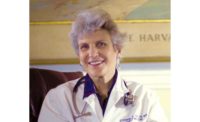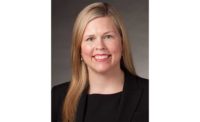Name: Julia Keen
Age: 43
Title: Professor of architectural engineering and construction science and Tointon engineering chair, Kansas State University; president, Keen Designs PA; and vice president, ASHRAE.
Educational Experience: B.S. and M.S. in architectural engineering and PhD in curriculum and instruction.
Professional Credentials/Accreditations: P.E., High-Performance Building Design Professional (HBDP), and Building Energy Assessment Professional (BEAP).
Organizational Affiliations/Achievements/Awards: ASHRAE society vice president, ASHRAE fellow, ASHRAE Distinguished Lecturer, ASHRAE Distinguished Service Award, 2018 ASHRAE E. K. Campbell Teaching Award, 2007 ASHRAE Advisor of the Year, K-State Bob and Betty Tointon Engineering Endowed Chair, 2017 K-State Multicultural Engineering Program Faculty Engagement Award, and 2015 K-State College of Engineering Myers-Alford Memorial Teaching Award.
When did you fall in love with engineering?
I cannot remember a time in my life when I was not fascinated by buildings. I was talented in art and math and spent my spare time enjoying the challenge of puzzle style games. Reflecting on my childhood passions, it’s clear that my choice to pursue a career in building systems was a perfect fit. As an engineer of HVAC systems, my daily challenges include solving multi-variable puzzles. The challenge is not to simply design an HVAC system that protects occupant health while ensuring comfort but doing so within a defined budget, accommodating space constraints and aesthetics, considering construction feasibility, maintaining a priority on energy efficiency, and ultimately meeting a client’s total needs.
What has been the most rewarding aspect of working in the skilled trades?
This is not an easy question to answer as my career is composed of two important components – consultant and professor. I began my career as a traditional mechanical/electrical/plumbing (MEP) consulting engineer. I very much enjoyed the profession but chose to try an academic position when the opportunity presented itself. Although I had never considered teaching as a potential direction for my career, it has allowed me to experience the best of two different worlds. I get to share my industry-based knowledge and experience with the next generation of engineers nine months of the year in the university classroom and the remaining three months of the year I act as an engineering consultant.
In the consulting capacity of my career, I especially enjoy the fast pace as well as continual challenge presented as an engineer of HVAC systems. I get bored quickly, so managing multiple projects/clients, keeping up with the newest technology and codes, and recognizing that no two projects are the same keep me engaged and fulfilled.
As a professor, I find tremendous reward in interaction with students. There is a different type of satisfaction that comes from seeing a student truly understand an HVAC concept, experience a positive internship, or find success professionally than can be found seeing a building that I designed take occupancy. I cannot adequately express the personal reward that is felt when I see a past student of mine serving in a leadership role within ASHRAE at the local chapter, regional, or society level because it indicates to me they not only value the profession but want to contribute to its progress. I see my career as an educator as the opportunity to influence and impact the future of the HVAC industry by providing a technical foundation while also sharing my passion for a career that is critically important to society.
What challenges do women face in this profession? Why aren’t there more women in engineering?
Our industry does not do a good job of marketing its importance to society and quality of life to young people (male or female). We also are ineffective at communicating the career opportunities within HVACR. This contributes to the lack of women in the profession but this is compounded when we consider the image of engineering portrayed. The image of an engineer is not typically of women who are successful, attractive, nor strong. Unfortunately, stereotypes are often perceived as real and we all need to do better to alter these false images if we want to effectively attract top talent dissuaded by the negative stereotypes.
There are also challenges for women who choose this career path, which effects retention. These challenges include perceptions of isolation (being a minority in the workplace), not regularly seeing women in leadership positions (questioning personal ability to get to this level when others have not), and a workplace culture reflecting/rewarding the priorities of men that are often different from women. I have seen changes occur during my 20-year career that will help retention and recruitment but additional change is needed to allow this career to be more attractive and fulfilling for women.
Describe what your job entails on a day-to-day basis.
Nine months a year, I’m a full-time professor in the architectural engineering and construction science program at Kansas State University. In this capacity, I’m responsible for teaching classes in HVAC-related topics, advising students, conducting research, connecting with industry, advising the student branch chapter of ASHRAE, and fulfilling leadership appointments within the university.
The rest of the year I act as a consultant thru my business Keen Designs, PA. My consulting services are diverse, including development and teaching of professional development courses in HVAC, serving as an owner’s representative, assisting equipment manufacturers to create U.S. marketing strategies, providing final design quality control review, and acting as an expert witness.
Teaching and consulting are what I’m paid to do, but I also dedicate a significant portion of my time to leadership roles within ASHRAE at the society level. This is an excellent way to stay current with technology and industry trends and network professionally with the top influencers of the HVAC industry while also directly influencing the HVAC industry globally.
What drives/motivates you every day?
The opportunity to always improve and do better. I enjoy and find great satisfaction in the process of implementing changes to advance an initiative or a priority.
Describe the proudest moment in your career.
This is a difficult question as I am torn between my personal accomplishments such as becoming as an ASHRAE fellow or being awarded the 2018 ASHRAE E. K. Campbell Award and the successes of my students. Watching my past students successfully present and answer questions at an ASHRAE meeting or conference is a tremendous moment of pride as is their receiving an award when they place for their entry in the ASHRAE design competition. It’s not that I take credit for their work, but it’s more I’m appreciative of the role I played in helping them realize their potential.
What remains on your engineering bucket list — what do you aspire to do that you haven’t done yet?
I have developed an interactive seminar aimed at women professionals and/or students preparing for a career in engineering or other fields that are predominately male. The primary objective is to discuss topics and skills that are not introduced in the college classroom environment to better prepare women for the engineering work environment. I want to deliver this to as many women as possible, because I see it as a first step in addressing the issue of retention of women in engineering.
What’s one thing no one knows about you?
There is very little that no one knows about me, especially anything I’m willing to reveal in this venue. The item that many people are surprised by is that one of my hobbies is boogie boarding on Lake Michigan waves. I diligently watch the Lake Michigan daily wave forecast for good surf in the summer months.
List any mentors who’ve helped you succeed and describe exactly how they’ve shaped your success.
1) Joe Kapaun, P.E. Joe hired me early in my career and taught me by example the importance of technical competence, integrity, business ethics, and hard work in this profession. He was quick to share his technical knowledge and help me understand concepts of HVAC design but also allowed me the space to explore and learn on my own. Likely the most important lesson he imparted was accountability – admitting to and owning one’s mistakes rather than making excuses or blaming someone else. Mistakes happen but it is how they are handled afterward that defines the person and forms their character. I am lucky to have worked for Joe and kept him as a friend since.
2) Dave Fritchen was my department head when I began in a faculty position at Kansas State University. Although I understood the technical part of being an engineer, I had no idea how to teach or manage a classroom. Dave was great at listening, making suggestions, and providing fair but straightforward feedback, especially when he thought I may be overcommitting myself. The most import role Dave played was being an unwavering advocate. He was very good about putting my name forward for awards and opportunities that would advance my academic career.
3) Tom Phoenix has been an important resource when I have questions about ASHRAE. Tom has served in the role of ASHRAE society president, so he has an incredible amount of experience and knowledge to be shared. I’m confident that I can reach out to Tom to provide perspective and assistance when facing an unfamiliar situation. If he does not have the answer, he quickly steers me to someone who can. He has been an invaluable resource when taking on new leadership roles within ASHRAE.
What does the future hold for you?
I hope to continue to grow as a professional, mentor young professionals, promote talented women, and advance the HVACR industry.
What advice do you have for prospective female engineers considering entering the field?
The HVACR industry provides great career opportunities that are amazingly rewarding and challenging. The key to success is to find knowledgeable people you respect from which to learn. Be open to criticism – realize that this feedback should not be taken personally but rather presents an opportunity for self-learning and improvement.




